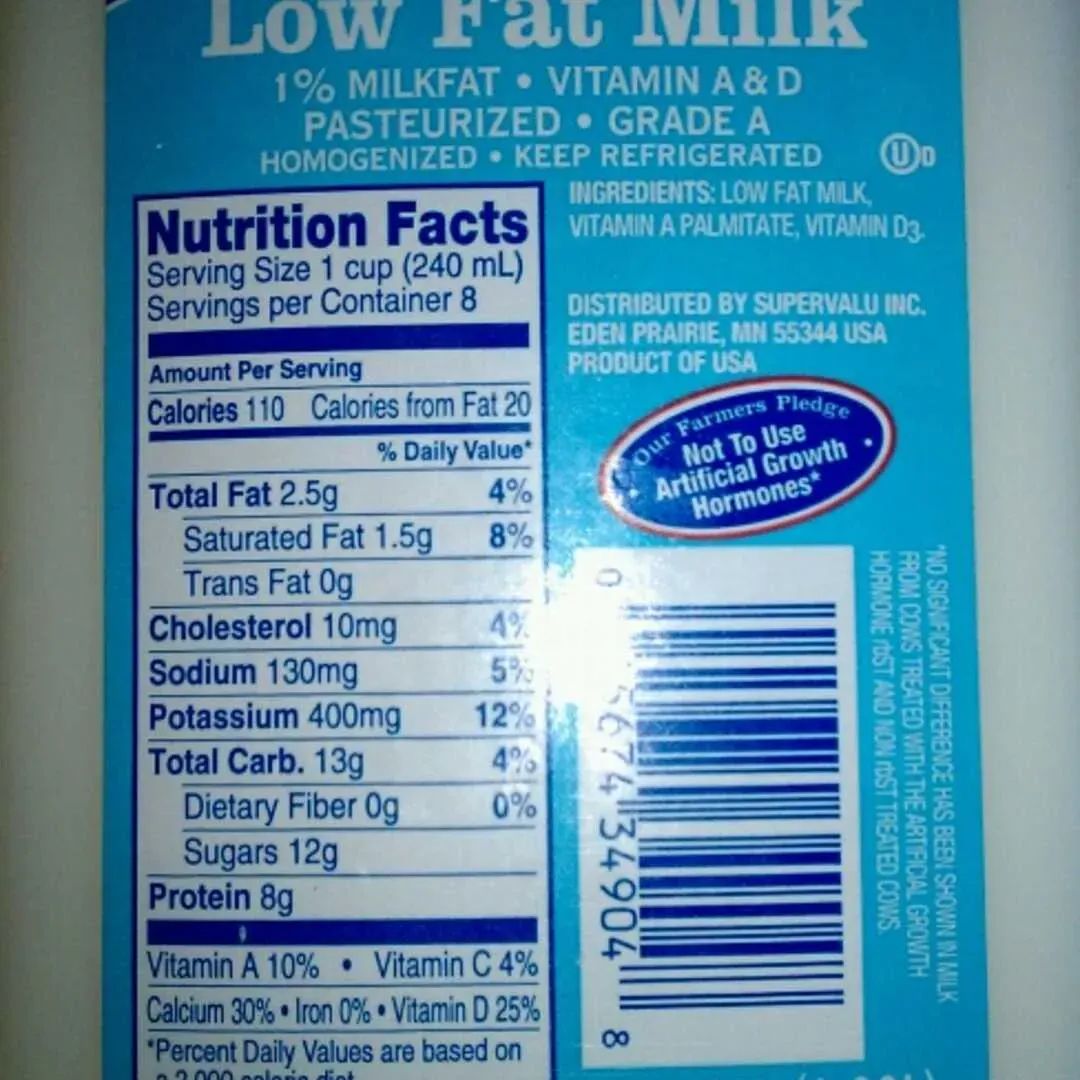Table of Contents
You’re trying to make healthier choices, so you reach for the low fat milk. Less fat, must be better, right? Then you glance at the nutrition label and notice something that makes you do a double-take: sugar. It sits right there on the list, sometimes in amounts that seem… unexpected. This often leaves people scratching their heads, wondering, "Why is there so much sugar in low fat milk?" It’s a fair question, and frankly, the answer isn't always as simple as "they added it." The truth about sugar in low fat milk involves a bit of dairy science and how milk is processed. This isn't about demonizing a common pantry staple, but rather about understanding what you're actually consuming. We're going to break down where that sugar comes from, what kind of sugar it is, how it compares to other milk types, and what it means for your health. Let's peel back the label and get to the bottom of the sugar situation in your low fat milk carton.
Why Does Low Fat Milk Contain Sugar Anyway?

Why Does Low Fat Milk Contain Sugar Anyway?
You might pick up a carton of low fat milk, see 'sugar' on the label, and immediately picture someone dumping spoonfuls of white granules into the vat. That’s usually not the case. The primary reason why low fat milk contains sugar anyway isn't because manufacturers are secretly sweetening it with added sugars to make it taste better (though flavored milks are a different story). The sugar you see listed is almost entirely natural lactose, which is the main carbohydrate found in all mammal milk, including cow's milk. When you remove fat and sometimes protein from milk to create lower-fat versions, the concentration of the remaining components, like lactose, can appear higher on the label relative to the total volume, even though the absolute amount of lactose per serving remains largely the same as in whole milk. It's simply part of milk's natural composition.
Milk is a complex liquid, containing several key components:
- Water (the largest part)
- Fats (removed to varying degrees in low-fat and skim milk)
- Proteins (like casein and whey)
- Carbohydrates (primarily lactose)
- Vitamins and Minerals (like calcium and Vitamin D)
Understanding the Sugar in Low Fat Milk

Understanding the Sugar in Low Fat Milk
Lactose: The Natural Sweetener
Alright, let's really get into understanding the sugar in low fat milk. The star player here is lactose. Think of it as milk's signature sugar. It's a disaccharide, which sounds fancy, but just means it's made of two smaller sugar units linked together: glucose and galactose. Your body has an enzyme called lactase that breaks this bond, allowing you to absorb these simpler sugars. This is the sugar that gives milk its slightly sweet taste naturally. When milk producers skim off the fat to make low-fat or skim versions, they aren't removing the lactose. So, that lactose content remains pretty consistent per serving across whole, 2%, 1%, and skim milk. The nutrition label shows grams of sugar, and for plain milk, almost all of that number is lactose.
Checking for Added Sugar (When It Happens)
While plain low fat milk primarily contains natural lactose, it’s crucial to be a label detective, especially with flavored versions. Chocolate, strawberry, or even vanilla low-fat milk often have added sugars like sucrose (table sugar), high fructose corn syrup, or other sweeteners to boost flavor. The nutrition facts panel is your best friend here. Look for the "Added Sugars" line under "Total Sugars." If that number is zero for plain low fat milk, you're just looking at lactose. If it's anything above zero, that's where the extra sweetness, and calories, are coming from beyond the milk's natural composition. Don't confuse the total sugar number with added sugar; the total includes both naturally occurring lactose and any added sweeteners.
Milk Type (Plain) | Approximate Total Sugar Per Cup (grams) | Primary Sugar Type |
|---|---|---|
Whole Milk | 12 | Lactose (Natural) |
2% Milk | 12 | Lactose (Natural) |
1% (Low Fat) Milk | 12 | Lactose (Natural) |
Skim Milk | 12 | Lactose (Natural) |
Chocolate Low Fat Milk | 20-25+ (Varies) | Lactose + Added Sugars |
How Low Fat Milk Sugar Stacks Up Against Other Milks
Comparing Low Fat to Whole Milk Sugar
So you're looking at the sugar in low fat milk and wondering how it stacks up against its full-fat cousin, whole milk. Here's the punchline: for plain, unflavored versions, the amount of natural sugar, which is lactose, is essentially identical. Both whole milk and low fat milk typically contain around 12 grams of sugar per 8-ounce serving. The process of removing fat doesn't strip away the lactose molecules. Think of it like taking some marbles out of a jar of marbles and sand – you still have the same amount of sand, but its proportion to the marbles changes. In milk, you remove fat, but the lactose stays put. So, if you're switching from whole milk to low fat milk for sugar reasons, you're likely not making a difference in your sugar intake from the milk itself.
Low Fat vs. Skim Milk and Alternatives
When you compare low fat milk sugar to skim milk, the story remains the same for natural lactose. Skim milk, having even more fat removed than low fat (1% or 2%) milk, still carries about 12 grams of lactose per serving. The calorie count drops significantly because fat is calorie-dense, but the sugar content from lactose holds steady. Now, venturing into the world of milk alternatives – almond, soy, oat, etc. – things get interesting. Their natural sugar content varies wildly. Unsweetened versions often have very little sugar, sometimes less than a gram. However, sweetened versions, which are quite common, can pack a serious sugary punch, often exceeding the sugar content of plain dairy milk because they have added sweeteners.
Milk Type (Plain/Unsweetened) | Approximate Total Sugar Per Cup (grams) | Notes |
|---|---|---|
Whole Dairy Milk | 12 | Natural Lactose |
Low Fat Dairy Milk (1% or 2%) | 12 | Natural Lactose |
Skim Dairy Milk | 12 | Natural Lactose |
Unsweetened Almond Milk | 0-1 | Very low natural sugar |
Sweetened Almond Milk | 7-15+ | Added sugars |
Unsweetened Oat Milk | 0-7 (Varies by processing) | Natural and sometimes processed sugars |
Sweetened Oat Milk | 10-16+ | Added sugars |
The Added Sugar Bomb in Flavored Milks
Here's where the sugar conversation around low fat milk gets significantly different, and frankly, a bit alarming sometimes. While plain low fat milk has predictable natural sugar from lactose, flavored low fat milk is a whole other ballgame. Chocolate, strawberry, and other flavored varieties are notorious for loading up on added sugars. These aren't just a little extra sweetness; they can easily double or triple the total sugar content compared to plain milk. A single serving of chocolate low fat milk can contain upwards of 20-25 grams of sugar, with a large chunk of that being added sugar. This is the sugar that health professionals flag as problematic, contributing excess calories without much nutritional value. Always check the "Added Sugars" line on flavored options.
Is the Sugar in Low Fat Milk Bad for You?

Is the Sugar in Low Fat Milk Bad for You?
so we know the main sugar in low fat milk is lactose, not typically added junk (unless it's flavored). Now for the big question: is that natural sugar in low fat milk bad for you? Generally speaking, the lactose found naturally in plain dairy milk isn't considered the same kind of dietary villain as the added sugars you find in soda or candy. Lactose is metabolized slower than simple sugars like sucrose or high fructose corn syrup. It gets broken down into glucose and galactose, and the glucose is used for energy. Plus, milk comes with a package deal – protein, calcium, Vitamin D, and other nutrients. Your body handles lactose differently than it handles a shot of pure sugar from a soda. It's part of a nutrient-dense food matrix, not just empty calories. However, if you're lactose intolerant, your body struggles to break down that lactose, leading to digestive issues, but that's a different kind of "bad" than the metabolic problems associated with excessive added sugar intake.
Making Smart Choices About Low Fat Milk and Sugar

Making Smart Choices About Low Fat Milk and Sugar
Become a Label Detective
Navigating the dairy aisle doesn't require a magnifying glass and trench coat, but a little label savvy goes a long way when you're looking at sugar in low fat milk. The first thing to do is flip that carton around and look at the Nutrition Facts panel. Pay attention to "Total Sugars." For plain milk, this is almost all lactose, the natural stuff. The critical line is "Added Sugars." This tells you exactly how much extra sweetener the manufacturer threw in. If you're buying plain low fat milk and this number is zero, great. If it's flavored, brace yourself. That "Added Sugars" number is the one contributing to excess calorie intake without the nutritional benefits that come with milk's natural components. My neighbor, trying to cut back on sugar, switched to chocolate low fat milk thinking "less fat means less bad stuff." He was shocked when I showed him the 20+ grams of added sugar per serving compared to the zero in plain.
Plain Wins Over Flavored, Every Time
If your goal is to manage sugar intake, especially added sugar, the choice between plain and flavored low fat milk is a no-brainer. Plain low fat milk provides the protein, calcium, and vitamins without the sugar spike from added sweeteners. Flavored versions, while perhaps more appealing to some palates (or designed to hook kids), are essentially milkshakes in disguise when it comes to sugar content. They contribute significantly to your daily added sugar limit, which health organizations recommend keeping low. Sticking to plain low fat milk means you're getting the nutritional upside of milk without the downside of unnecessary added sugar. Save the flavored stuff for an occasional treat, not a daily staple.
Consider your options:
- Plain Low Fat Milk: Natural lactose, zero added sugar (usually). Nutrient-dense.
- Flavored Low Fat Milk: Natural lactose PLUS significant added sugars. Treat, not daily drink.
- Unsweetened Milk Alternatives: Very low natural sugar, zero added sugar (if unsweetened). Nutrient profile varies greatly from dairy.
- Sweetened Milk Alternatives: Added sugars often comparable to or exceeding flavored dairy milk.
Context and Portion Size Matter
Even with plain low fat milk, understanding the sugar in low fat milk within your overall diet is key. While the 12 grams of lactose isn't "bad" in the way added sugar is, total sugar intake still counts, especially if you have specific health conditions like diabetes. Portion size is also important. Drinking a gallon a day means you're consuming a lot more sugar than just a single glass. Think about what else you're eating and drinking throughout the day. Is your diet already high in sugars from other sources? If so, the lactose in milk adds to that total. For most people, a moderate amount of plain low fat milk fits well into a balanced diet. It’s about the whole picture, not just isolating one nutrient in one food.
Wrapping Up the Sugar Story in Low Fat Milk
So, what's the final word on sugar in low fat milk? The primary sugar you see listed is almost always lactose, the natural sugar found in all milk. Removing fat doesn't magically remove this inherent component. While some flavored low fat milks pile on the added sugars, the plain version's sugar content is largely dictated by nature. Understanding this distinction is key. It’s less about the presence of sugar and more about the *type* and *source*. Check labels, especially for flavored varieties, and consider your overall dietary sugar intake. Low fat milk can still be a nutritional part of many diets, but like anything else, awareness of what's inside the carton helps you make the best decisions for yourself.
